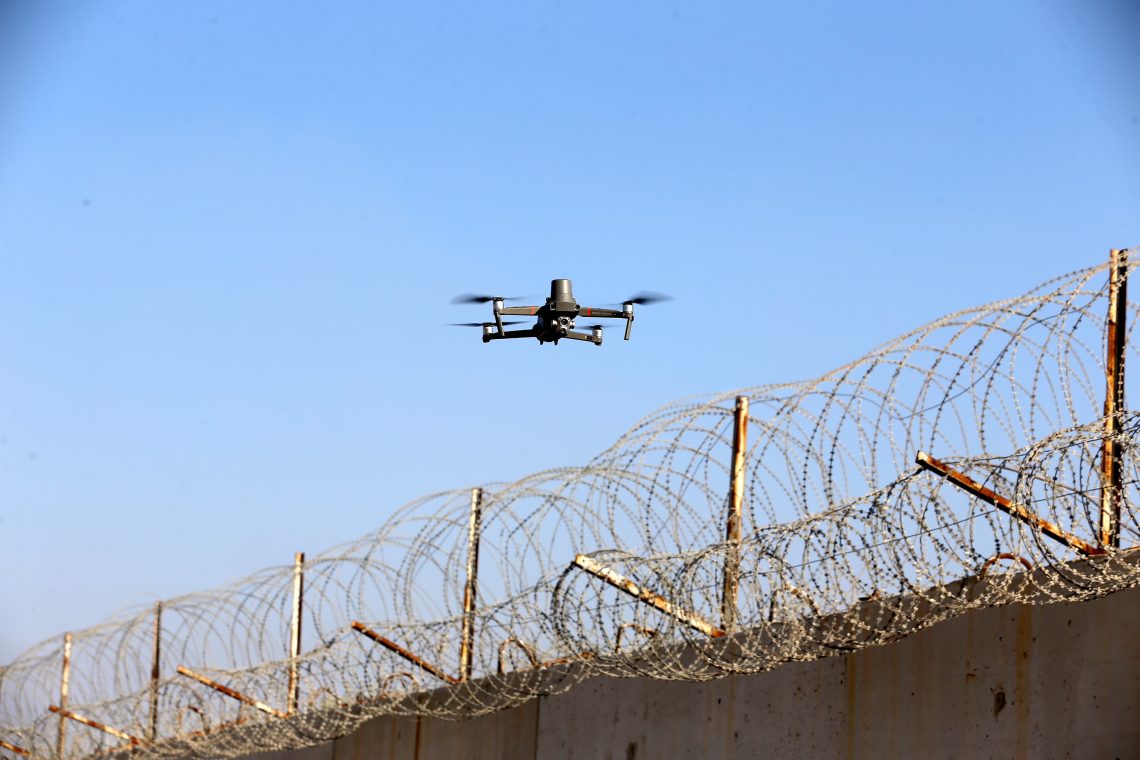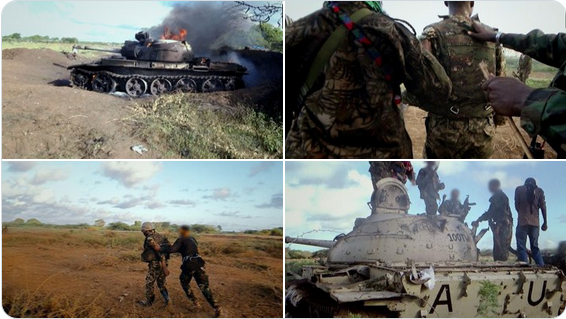Middle East groups learn lessons from the Ukraine War
Islamist militias are analyzing the war in Ukraine for tactics, signaling a strategic shift for armed groups in the Middle East.

In a nutshell
- Middle Eastern militias are studying the conflict in Ukraine
- Armed groups are adjusting their strategies accordingly
- They may eventually align with one side of the conflict or the other
Armed groups in the Middle East have been closely watching the return of war to Europe. They are jotting down good and bad ideas, mistakes to avoid and possible innovations for their own future conflicts.
Islamic militias pride themselves on having kept the Great Powers at bay during the Gulf wars and the international fight against terrorism. Today their opponents are squaring off against each other in a total, technological and bloody war, causing 700 to 800 deaths per day. Reports and analyses on the conflict are being produced, notably by the Khattabi Centre for Revolutionary Studies and Warfare, based in the rebel-held part of Syria. Radical Islamist strategists post documents, screenshots and videos of combat in Ukraine on social networks.
The conflict is sending a powerful message to the armed groups, who had not expected such an outbreak of violence in Europe. The firepower deployed in Ukraine has made Middle Eastern armed groups realize that an all-out war against Western or Russian forces would be much longer and more devastating than what they have experienced in Homs, Raqqa or Mosul.
The Arab world opted to stay out of the Ukrainian conflict so as not to relive the troubles of the Cold War, but as months went by, it became clear that everyone had to take a stand. Egypt wanted to play both sides and tried to supply ammunition to the Russians, but the affair was covered up. Israel would have liked to play the role of mediator, but has now decided to send nonlethal aid to Kyiv. The same goes for Morocco, which wanted Russia’s signature on the Western Sahara issue in the Security Council. In the end, it had no choice but to join the pro-Western camp.
Lessons learned
Militant groups in the Middle East are watching how Ukraine is fighting back against a larger, stronger opponent. As one analyst wrote: “It would be foolish for a rebel to use all his available forces to attack his opponent conventionally.” The lessons armed groups have drawn from the conflict so far can include:
- Divide your forces into small, mobile groups to initiate movement
- Give autonomy of initiative to the bottom of the hierarchical ladder
- Keep your soldiers motivated, to increase group cohesion
Meanwhile, an analysis of the Russian Armed Forces reveals the importance of other factors:
- Capacity for prolonged and gradual reinforcement of the military posture prior to the outbreak of hostilities
- Resilience in the face of high casualties
- Intelligence and local collaborators
Radical strategic thinkers are looking with interest at strikes that break down both the enemy’s materiel and their morale. Islamic State (also known as ISIS or Daesh) has used them to stun their opponents during advances, and delayed battles by combining Improvised Explosive Devices (IEDs), booby-trapped vehicles and suicide bombers.
Other tactics are questioned, such as the extension of Russian defensive lines over 800 km to avoid bypass maneuvers. Arab strategists prefer bulldozed embankments to trench networks, which require solid logistical support. The use of reservoirs is also discussed. ISIS captured dozens of them when they took Mosul, but this did not affect the outcome of the battle.
For Middle Eastern armed groups, the Ukrainian conflict also demonstrated the extreme cost of tactical support: fuel, ammunition and mechanical maintenance. The war has also cemented the belief that the greatest strength of any armed group is its motivation. Ukrainian President Volodymyr Zelenskiy made his mark in the early hours of the conflict by speaking from his smartphone on the streets of Kyiv – a stark symbol of the power asymmetry between him and the Kremlin. The boss of the Wagner Group, Yevgeny Prigozhin, is seen as a strong leader as well.
New hope for an end to Yemen’s civil war?
ISIS keeps dwindling in Syria
Future developments
The Ukrainian conflict also highlights the Middle Eastern groups’ structural weaknesses, including their inability to wage war in extended areas. While Kyiv controls partisan units behind Russian lines, Middle Eastern forces have lost their ability to project. Gunfire around the Russian military base in Khmeimim, Syria, is too episodic to pose a real threat. ISIS attacks on Middle Eastern capitals have become rare.
While drones are emerging as a major force in the Ukrainian conflict, they are mostly absent from Middle Eastern groups’ tactics. The latest ISIS video shows a series of executions that could have been filmed in 2014; their modus operandi has changed little since. In May, al-Qaeda announced its first drone attack in Yemen, in the province of Shabwa. No information was provided about the drone, or drones said to have been discreetly supplied by Houthi rebels.

In Syria, Sunni militants have set up their own drone unit, launching from bases near Idlib, but the only swarm attack against a Russian target dates back to 2018 and had no impact on the outcome of the fighting. Since then, the use of drones has been marginal.
Drones will likely be the next area of development and evolution for Islamist armed groups, and they will be used less for communication and more for operational purposes. Arms smuggling between Syria and Jordan is now often carried out using unmanned aerial vehicles.
The West has long blamed the Arab world for the proliferation of militias. Middle Eastern armed groups now note with satisfaction that one army beyond the Arab world is making full use of them: Russia has Wagner, but also Gazprom’s private armies Plamya and Fakel.
Some strategists have deducted that the model of a national army and auxiliary militias is valid. This tandem already exists in Iraq, where the Hashd al-Shaabi militias receive $2.8 billion from the national budget. Syria created the National Defence Forces, and Lebanese paramilitaries account for 15 percent of the army’s ranks. Militias have concluded that non-state armed forces have their place in today’s world; the only question is whether they will continue waging total war alone or try to link up with – but not integrate into – a country’s national army.
Scenarios
Middle Eastern armed groups become involved in a global conflict
In the wake of U.S. sanctions against Wagner’s assets in Africa, the conflict in Ukraine has repercussions far beyond the country’s borders. The interplay of alliances could lead to a return of proxy wars. There are several signs of this. The U.S. recently decided to deploy F-22s in the Middle East, and when the Russian air force bombed Jisr al-Shughur (Idlib-Syria), the Syrian opposition press concluded that “Syria is part of the global conflict.”
Islamist armed groups focus on narrower regional influence
The majority of armed groups refuse to return to the pattern inherited from the Cold War. They persist in the Iran-inspired ring of steel strategy: a strong military anchor in one region, from which light, mobile military units are projected to terrorize with disproportionately violent attacks. This pattern is becoming established, supported by swarms of drones that are being given new missions, including targeted assassinations by kamikaze UAVs, sabotage of infrastructure with grenades and disruption of traffic in civil or military airport zones.









